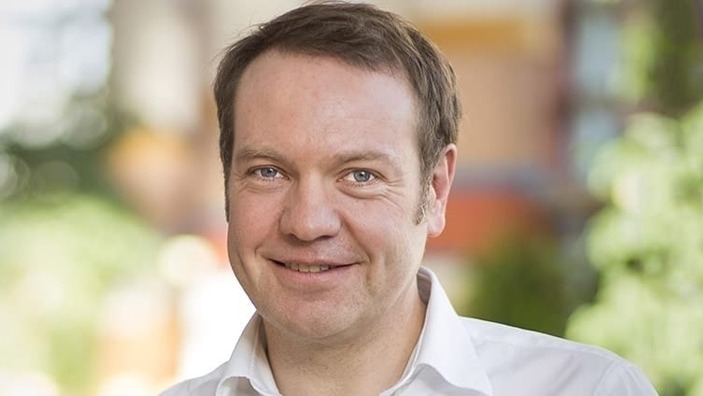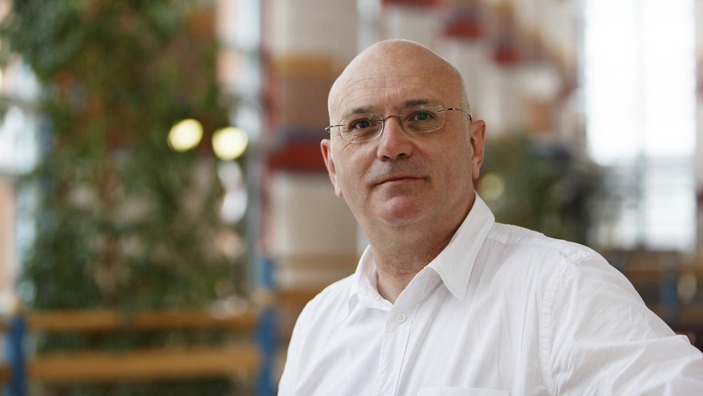When the city of Vancouver established Canada’s first safe drug injection site back in 2004, it sparked a spirited discussion about the use and misuse of social innovation. While many viewed deaths from the injection of impure drugs as a self-evident problem, some local citizens viewed the use of illegal drugs as so immoral that it should not be made safer. Others worried that these drug-injection facilities would promote drug use and pose dangers to the community, and efforts should be focused on fighting illegal drug use rather than facilitating it.
Even the tackling of less contentious social issues, like homelessness, can face scepticism from people concerned about fostering dependency while sparking concerns that efforts to combat homelessness address the symptom rather than the root causes of the problem.
So how can social innovators find better ways to convince stakeholders of their practices (and not only their missions), in order to make better and faster progress in tackling society’s many issues?
How persuasive practices can boost the effectiveness and impact of social innovation
Research at Cambridge Judge Business School by Paul Tracey, Professor of Innovation and Organisation, and Neil Stott, Management Practice Professor of Social Innovation, points to a novel way of framing the work of social innovators that draws on what they term a ‘repertoire of persuasive practices’ that simultaneously focus on both the problem and solution of the issue at hand.
“Too often the problem and solution have not been sufficiently interlinked to make social innovation as effective as it can be,” says Paul. “Our aim is to provide a model that is as effective in practice as in theory.”
The goal of the framework of Paul and Neil is to show the importance of legitimising a particular understanding of an issue so that it is widely viewed as a problem in society that needs to be addressed, while at the same time establishing a particular approach to tackling that issue so the chosen method is broadly accepted as an effective solution.
Why is this work important? Because addressing a social issue requires more than developing an effective approach to the problem at hand. Social innovators also need to persuade key stakeholders that their approach is effective – and that these stakeholders should support and commit resources to it – particularly as there will be many alternative ways that the problem could be addressed.
This idea can help social innovators increase the visibility, impact and acceptance of their work, and Paul and Neil believe that it holds real promise in helping to address some of the world’s wicked problems. These include nearly a billion people living in extreme poverty, 800 million lacking access to electricity, more than 2 billion people who lack safe drinking water and 89 million people who have been forcibly displaced – all exacerbated by persistent inequality and the effects of climate change.


Expanding the scope of social innovation beyond market-driven models
The research by Paul and Neil, Co-Directors of the Cambridge Centre for Social Innovation at Cambridge Judge, draws on – and adds important elements to – previous studies about so-called ‘social-symbolic work’, which is broadly defined as the purposeful efforts of individuals, groups and networks of people to construct the social and organisational worlds.
Such discussion of social innovation has usually been underpinned by an assumption that social change requires organisations to practice market-based activity while balancing social and commercial goals. But this approach “has come to be perceived narrowly and in ways that arguably distort both how it is theorised and how it is enacted in practice”, argues research by Paul and Neil in the Journal of Management Studies, because it often makes such activity increasingly dependent on the ability to convince foundations, governments and investors that engrained social issues can only be addressed through enterprise done at scale.
“As a result of this dominant way of viewing social problems and their solutions, social innovators often default to market-based, entrepreneurial practices no matter the context or the issue,” says the research. “By contrast, we conceptualise social innovation as fundamentally rooted in social-symbolic processes where social problems and solutions serve as foundational, and mutually constituted, social-symbolic objects that guide the actions of social innovators. This perspective offers an alternative to much existing social innovation research, which emphasises, for example, the mobilisation of resources, the fostering of partnerships and alliances and the creation of models that balance social and commercial goals.”
Creating new organisational models with hybrid logic in social innovation
Prior Cambridge Judge research, for example, focused on how a social enterprise effectively framed homelessness as a problem of unemployment rather than of housing – and this helped cement support from key stakeholders including investors, policymakers and other homeless support groups.
“The question of how new organisational forms are created remains an unsolved problem in new institutional theory,” says this earlier research, published in the journal Organization Science. “We argue that one important way that new organisational forms emerge is through a process of bridging institutional entrepreneurship, which involves an institutional entrepreneur combining aspects of established institutional logics to create a new type of organisation underpinned by a new, hybrid logic.”
Homelessness was also the focus of research by Simon Dwight, a graduate of the Masters of Studies in Social Innovation degree programme (MSt in Social Innovation 2020) at Cambridge Judge. The research, which explored how homeless people in the UK city of Bedford make sense of interventions designed to help them, was supervised by Professor Paul Tracey as part of the degree programme.
“Those able to build relationships outside the homeless community were better able to succeed in moving out of homelessness,” the research found, according to a summary published on the Cambridge Judge website. In addition, the research found that newly homeless people often lack information about interventions designed to help them, with such information often being mediated “for better or worse” by other members of the homeless community who had previously experienced interventions.
“Ending homelessness is about more than finding buildings for people to live in. It is about helping those that have fallen out of mainstream society back into it and finding a place to belong,” says the research, which notes that its findings may also apply to other marginalised communities such as refugees and asylum seekers.
Why social innovation must engage with history, philosophy and sociological theory
Research on social-symbolic work going back to the mid-1960s has provided a template to explain how individuals and organisations shape the world while also accounting for the social constraints on action they face. Such research focuses on the concept of a ‘social-symbolic object’ – which can take many forms (including combinations) such as beliefs, values, ideas, emotions, languages and practices. For example, an influential 1966 book on ‘The Social Construction of Reality’ concludes that sociology “must be carried on in a continuous conversation with both history and philosophy or lose its proper object of inquiry”.
Drawing on such continuous conversation, Paul and Neil say that today’s social enterprises can learn from 19th century social reformers who founded such cherished social institutions as libraries, public health systems and mutual insurance. “These new institutions were often based on the co-operative model,” says Neil, whose previous research looked at the ideas put forward around 1900 by sociologist W.E.B. Du Bois on Black co-operative business models in the US.
Since the end of the 19th century, however, this type of social organising has often become too focused on enterprise rather than what Paul and Neil refer in their research to “the range of persuasive and political skills needed for social change”.
To refocus once again on the social and not just entrepreneurial aspects of social innovation, the research at Cambridge Judge draws on the work of American sociologist Jack Rothman, a US sociologist and social worker who in 1970 outlined 3 types of community organisational practices – locality development, social planning and social action – and later developed a methodology he termed ‘Social R&D’. Paul and Neil modified Rothman’s 3 modes to argue that social innovators can leverage 3 forms of social-symbolic work to address deep-rooted social issues: social inclusion work, social activism work, and socio-political work.
1
Strengthening communities through social inclusion work
This type of work seeks to strengthen the self-esteem of marginalised groups by encouraging them to see challenges such as unemployment or isolation as social problems rather than individual failings.
“This form of work can therefore be seen as an essential building block of bottom-up participatory approaches to social issues. It both creates awareness within marginalised groups about the nature of the issues that they face and amplifies their voices.”
In addition, social inclusion work supports communities to prioritise local knowledge and draw on their own experience in critiquing community problems and also encourages assets to be held in shared ownership.
Development trusts in the UK and community development corporations in the US reflect this type of structure, placing responsibility in the hands of local guardians while helping to protect key resources for community use rather than leaving them subject to property speculation. One such successful organisation, the Dudley Street Neighborhood Initiative, has been the subject of numerous case studies and other research.
2
Driving systemic change through socio-political engagement
This entails organising to overcome harms and achieve social, economic and environmental justice, which frames social problems in marginalised communities as rooted in the failure of formal legal and political systems.
In contrast to social inclusion work that empowers community members to address their own challenges, socio-political work recognises the necessity of engaging with mainstream political structures in order to solve deep-rooted community problems.
“This necessitates a sophisticated understanding of political systems and a willingness to engage with the elites that are often seen by community organisations as part of the problem rather than the solution to issues of marginalisation,” say Paul and Neil, again suggesting a broader approach to achieve results.
3
Challenging power structures through social activism
This involves the organising of individuals, groups or communities to achieve social justice through protest, and embodies a basic premise that some voices are ignored by political elites and lack access to many political channels.
“Unlike sociopolitical work which involves working collaboratively with actors in positions of power, social activism work challenges dominant discourses through direct provocation and is designed to subvert or break legitimate institutional norms that maintain the position of elites,” say Paul and Neil.
Such social activism can take the form of awareness campaigns, demonstrations and civil disobedience such as sit-ins and boycotts that are designed to attract attention and signify urgency.
A practical framework that bridges theory and practice in social innovation
The research at Cambridge Judge concludes that such social-symbolic work is a “particularly valuable lens for examining social innovation because of its ability to span theory and practice” – bridging various domains that too often operate in silos.
“A key strength of our framework is that it highlights a more expansive repertoire of practices that social innovators need to enact when seeking to make change,” say Paul and Neil. “We hope that social innovation researchers and practitioners will challenge, test and extend our framework, and in so doing help to promote a set of ideas that social innovators can use in their social-symbolic efforts to make lasting social change.”
Featured faculty
Paul Tracey
Professor of Innovation and Organisation
Neil Stott
Management Practice Professor of Social Innovation
Featured research
Tracey, P. and Stott, N. (2025) “Constructing ‘problems’ and ‘solutions’: social innovation as social-symbolic work.” Journal of Management Studies
Tracey, P., Phillips, N. and Jarvis, O. (2010) “Bridging institutional entrepreneurship and the creation of new organizational forms: a multilevel model.” Organization Science
Dwight, S. (2020) “How to homeless people make sense of interventions designed to help them.” MSt in Social Innovation research summary
Tracey, P. and Stott, N. (2025) “Social innovation is not just about solving problems – it’s about constructing them.” managementstudiesinsights.com, 12 August 2025





